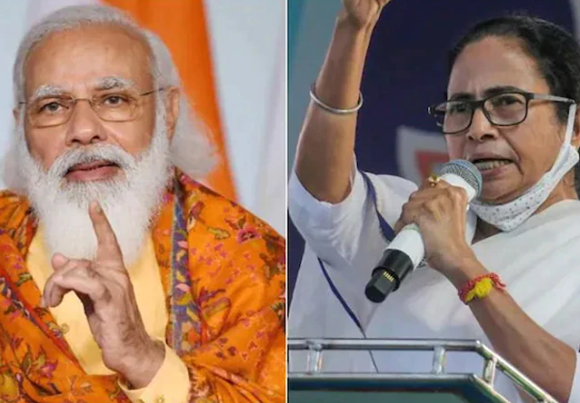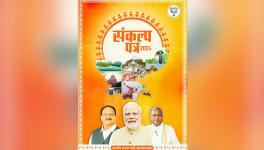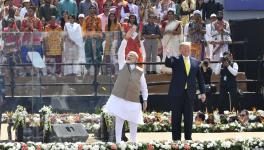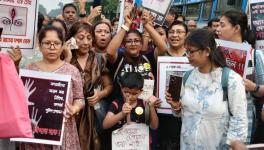Bangladesh Watches as West Bengal Goes to Polls Today

Narendra Modi and Mamata Banerjee. Image Courtesy: Business Today
The paradox is puzzling. Bangladesh is celebrating the Golden Jubilee of its liberation and the centenary of its founding father, Sheikh Mujibur Rahman, events that evoke and reinforce the nation’s secular ethos. As Chief Guest for the celebration they have invited India’s Prime Minister, Narendra Modi, probably a natural choice given India’s contribution to the nation’s liberation. India has reciprocated by conferring the Gandhi Peace Prize to Bongobondhu Sheikh Mujib by deviating from the tradition of not awarding the prize posthumously.
But coincidentally, and problematically, Modi is a person who epitomises the negation of that ideal, that is, secularism. As the Bharatiya Janta Party’s (BJP) star campaigner for the West Bengal Assembly elections that start today, Modi has been energetically selling Hindu-Muslim division, something that has historically not been a feature of the state’s politics. The incumbent Trinamool Congress (TMC) has picked up the gauntlet and decided to stand by its avowed secular record.
Hindutva’s entry into Bengal politics has been in the making ever since the Modi-led BJP came to power at the Centre in 2014. However, its big break came in 2018, when TMC goons used violent tactics to massively rig local body elections and comprehensively oust the traditionally powerful Left. Many demoralized Left cadres were left bitter and directionless. The BJP, ever on the lookout for foot soldiers to help it make inroads into Bengal’s grass roots politics, welcomed them with open arms. Almost overnight, the party gained a toehold in a state that had heretofore been out-of-bounds for communal parties.
Within a year, this toehold transformed into a massive footprint. In the parliamentary elections of 2019, the BJP bagged 18 out of 42 seats and 40.64% of the popular vote, just three percent less than the TMC. A nobody had become somebody, and a new set of battle-lines were drawn. At one end stands the indomitable TMC matriarch, Banglar Meye (Bengal’s daughter) Mamata Banerjee, with inexhaustible street fighter energy and massive grass-roots support. At the other end is the mesmerizing national leader Modi, commander of Hindutva forces bolstered by the 100-year old sectarian Rashtriya Swayamsevak Sangh (RSS; a rightwing Hindutva paramilitary organisation directly inspired by fascist movements of the 1920s). Given the forces arrayed against her, it is much to Mamata’s credit that she has refused to be cowed down. Not for nothing is she jocularly called Modi in a cotton saree. A battle royale awaits.
Money matters in any election. Thanks to the racket of electoral bonds, the BJP has filled its coffers while simultaneously reducing other national parties to relative penury. The TMC, essentially a state party, is very much a victim of this fraudulent imbalance. With the massive resources at its command, the BJP has browbeaten all opposition parties. Many political opponents have aggressively been lured into joining the BJP or the BJP-led National Democratic Alliance (NDA).
Those who have resisted have become the subjects of smear campaigns orchestrated by major TV channels dependent on government patronage. The money has also bolstered the activities of the RSS, which has quietly been spreading its Hindu nationalist ideology all across India, including in Bengal.
The West Bengal election is, therefore, much more than a mere state election. It is an ideological bellwether, one that may well determine the direction of India’s politics for years to come. Will the ‘idea of India’ survive, or will India become a Hindu nation where Muslims are second class citizens and where the constitution and courts mere enablers of unchecked state abuse?
Situated next door, Bangladesh will be forced to read beyond the obvious, both during the eight rounds of voting in March and April as well as after the results are out on 2 May.
Many commentators explain the pro-BJP tilt among large sections of Bengal’s voters as a reaction to TMC’s highhandedness and local level corruption. My take is different. I would argue that the trend draws its strength from the unprecedented rise of the RSS-BJP combine in India’s national politics. Electoral gains are the most obvious evidence of this rise. Far less remarked upon, but just as salient, is the record increase in the number of RSS sakhas and RSS-funded primary schools all over India, including in Bengal. It is these that have normalised Hindutva and allowed for its systematic ingress into society.
Against this larger process, the TMC’s rigging of the 2018 local polls only served as a catalyst for the BJP to up the ante in Bengal. The point is, the BJP in Bengal is not reactive, it is out and out proactive. It is the TMC that has been forced into reacting.
The question then is, will the BJP’s strategy succeed to the same degree it has in many other parts of India, most notably in the Hindi-speaking north. Or will the much debated and perhaps over-romanticised “Bengali exceptionalism” have the final say?
As we grapple with these possibilities, we would do well to remind ourselves that even as many other parts of India were reeling from post-Partition Hindu-Muslim riots, Bengal remained an oasis of peace. Although Calcutta’s streets were inundated with millions of refugees, the city did not witness a break down in law and order, nor any major sectarian violence.
Instead, Bengalis responded to the tragedy with a burst of creative energy. Movies, novels and plays produced during and after this period often focused on the pathos of a divided Bengali jati (the closest English word is ‘sub-nation’). Ritwik Ghatak or Nemai Ghosh’s films narrated the nostalgia and yearning that many Bengalis had for a pre-Partition Bengali culture.
In light of this longer history, will the BJP’s sudden love for the Bengali subaltern Hindu destroy the essentials of Bhadralok secularism? Will Bengal’s heretofore casteless politics experience a Pandora’s Box moment? The BJP’s election manifesto offers some clues. It is true that voters seldom take manifestos seriously. After all, no less a figure than Home Minister Amit Shah himself admitted that Modi’s 2014 poll promises were gimmicks (jumla), meant only to secure votes. And yet, it will be hard to forget (or forgive) the sheer brazenness of the present BJP manifesto. Read it and you are left with the impression that Bengalis were prevented from celebrating Durga Puja or Saraswati Puja because of the “Muslim-appeasing” rule of the TMC. Amit Shah underlines this in an interview.
The BJP does, however, understand that the best electoral strategy in Bengal is to fan Bengali pride in their cultural icons. If the philosophies of these icons mock the BJP’s ideology, so be it. What matters is an election victory; the power so gained can then be used to impose the “correct” ideology.
Little surprise, then, that most of schemes promised are named after such Bengali luminaries as Tagore, Vidyasagar, Subhas Bose, Bankim Chandra, Ashutosh Mukherjee, Satyajit Ray, and Uttam Kumar. One name is conspicuous by its absence: Shyamaprosad Mookerjea, the founder of the Bharatiya Jana Sangh (forerunner to the BJP). It may be safe to flaunt his name in other parts of India, but in Bengal it is evidently too risky to bracket him with the Tagores and the Boses.
Let me conclude by returning to the paradox I opened with. For both Hasina Wajed and Narenda Modi, the opportunity is apparently similar, but dig deeper and serious contradictions emerge. Both are playing to their respective galleries, but with contrasting ambitions. Bangladesh is happy with India because economically it is gaining. Its exports to India have registered a 300% increase.
India too is happy because Bangladesh is preventing northeast-based insurgents from using Bangladeshi soil as a haven. But beyond these points of confluence lies a vast and perilous sea.
Modi’s Hindutva and Hasina’s ‘secularism’ are fundamentally antagonistic. If the BJP seizes power in West Bengal, the political challenge for Hasina will multiply manifold. The glossy goodies in the Hasina-Modi joint statement will be of little value then. Relations will likely be vitiated because neither Modi nor Shah understands regional psyches in South Asia. To them, foreign policy is merely domestic politics by other means. And we all know what that domestic politics looks like.
The author is a senior fellow at the Institute of Social Sciences, New Delhi. He is a former ICSSR National Fellow and professor of South Asian Studies at JNU. The views are personal.
Get the latest reports & analysis with people's perspective on Protests, movements & deep analytical videos, discussions of the current affairs in your Telegram app. Subscribe to NewsClick's Telegram channel & get Real-Time updates on stories, as they get published on our website.























